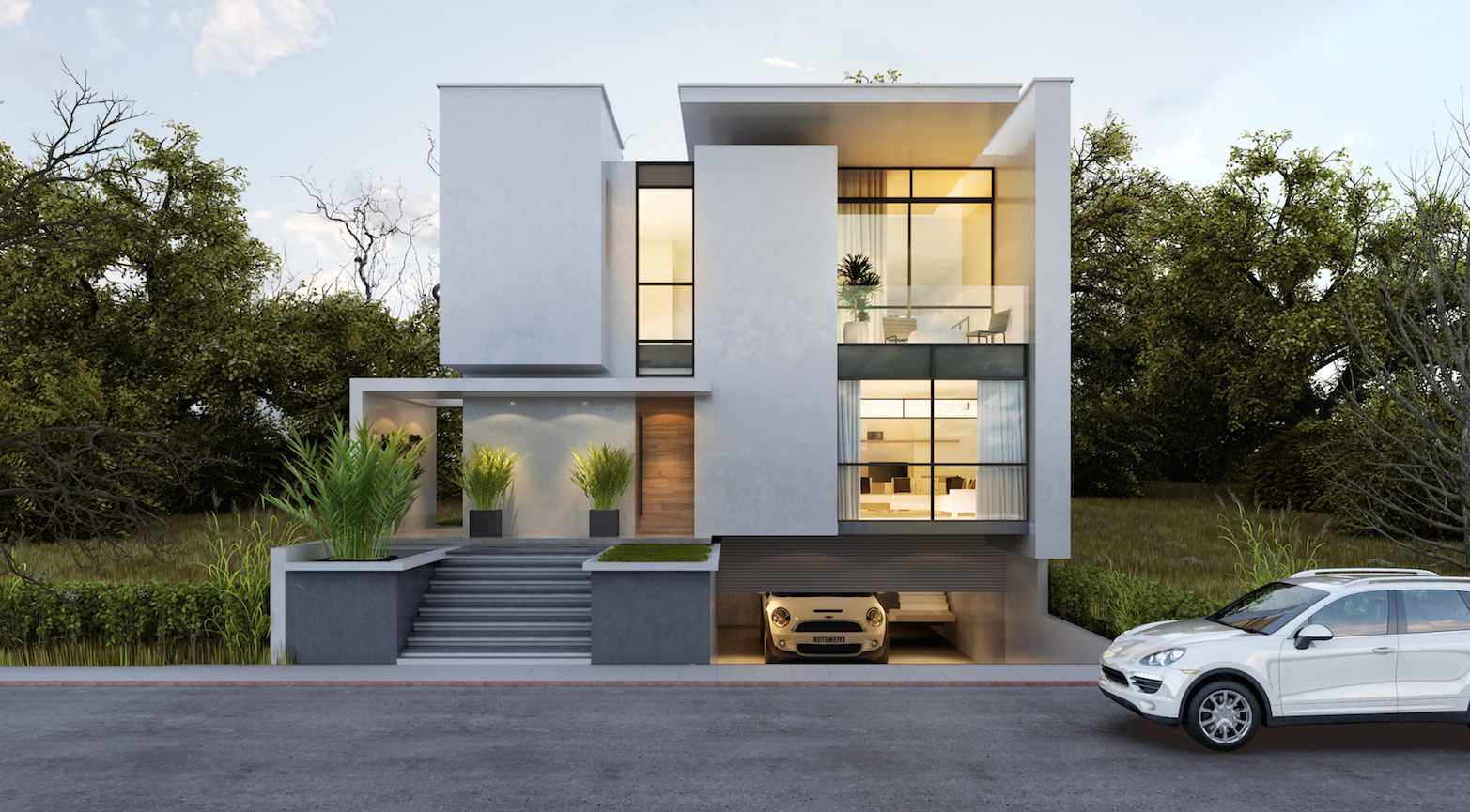
2030Studio were commissioned to design a family home in the coastal city of Balneário Camboriú, in Santa Catarina, Brazil. The design for the three bedroom house would need to create strong inside-outside connections bearing in mind that cost would be a significant consideration and qualification for any sustainability strategy.
Project Stats
Project type: Residential
Location: Balneário Camboriú, SC, Brazil
Client: Gabriella Buckstegge
Building type: House
Floor area/Occupancy: 360m2 / 3 stories / A family of 4
Project stage & completion date: Design development / Dec 2016
Budget: Withheld
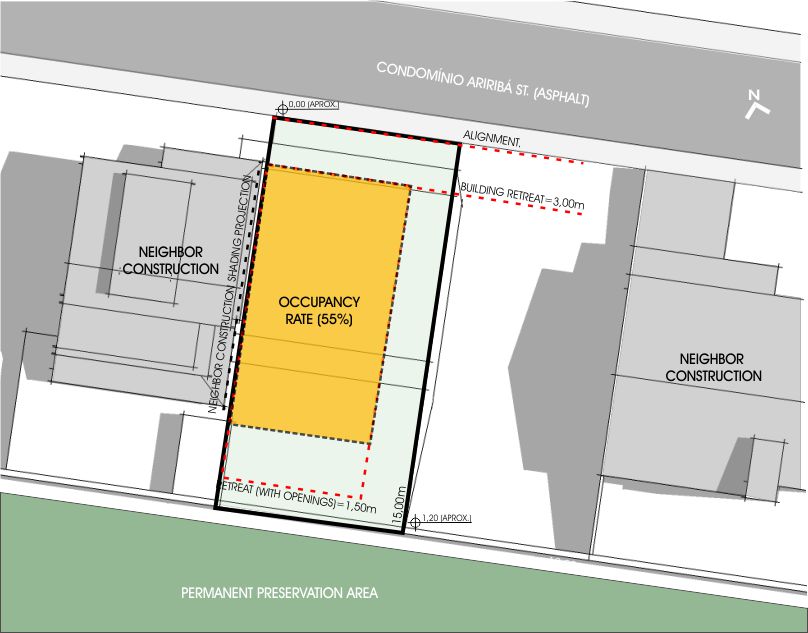
Location of the main house and its surroundings
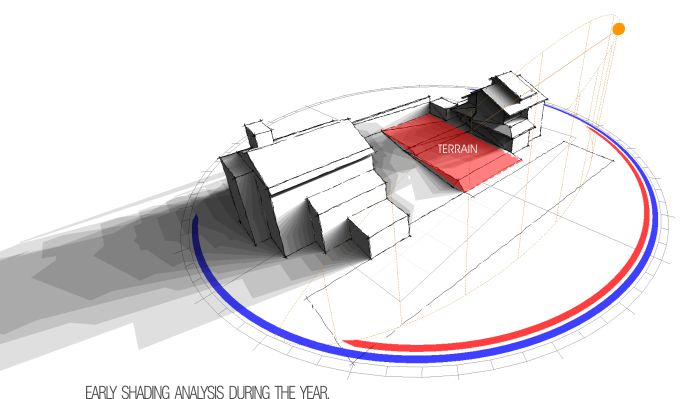
Annual shading analysis
Approach: The 2030Studio team’s initial design, that placed private rooms on the upper floor and the more public spaces below, established a strong connection between inside and outside whilst ensuring privacy for the home’s residents. Large glazed openings frame desirable views of a national nature reserve just behind the site and ground floor spaces open up to connect to the back garden. While these indoor-to-outdoor connections were compelling, the design team was concerned that they would have a negative impact on solar gains and glare within these spaces.
To test their assumptions, the team created a whitebox model based on this initial concept, and analyzed it using Sefaira’s realtime plugin and daylight analysis feature.
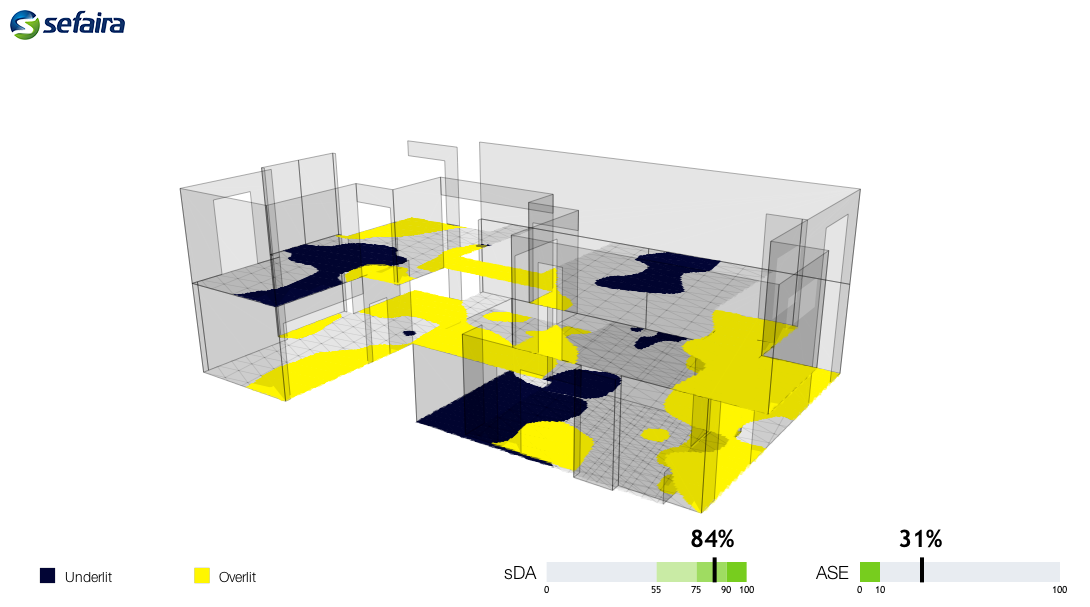
Initial Sefaira daylight analysis showing overlit and underlit areas
Initial results showed a good sDA level (84%) but a high ASE value (31%). Once the problems were clearly diagnosed, it was possible to develop the concept and improve the overall daylight performance. To tackle the overlit and underlit areas, the team:
added shading projections and light shelves to the main patio to prevent glare in the spa and dining area;
introduced clerestory windows to bring daylight deeper into space;
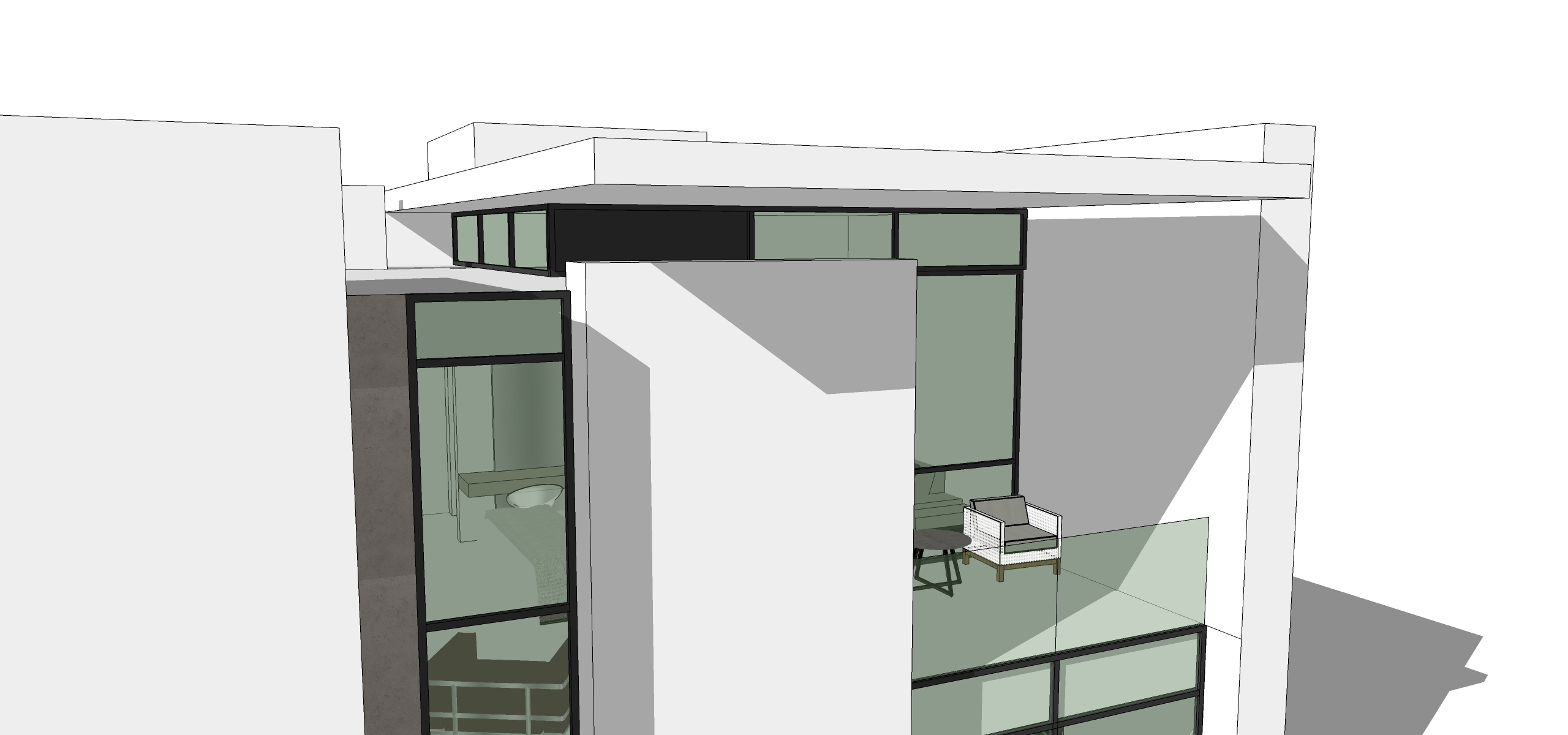
Rendering by 2030Studio showing shading projections and clerestory windows
Results: Using Sefaira, 2030Studio were able to analyze their proposed solutions to ensure better daylight distribution across all spaces; they were able to significantly reduce glare in most spaces, driving ASE levels down from 31% to 9%. Implementing the shading strategies reduced sDA by only 3% — thus keeping the average daylight levels high within all spaces. In addition to a well lit interior and better visual comfort, they were able to reduce EUI by 17% (from 97kWh/m2/yr to 80kWh/m2/yr).
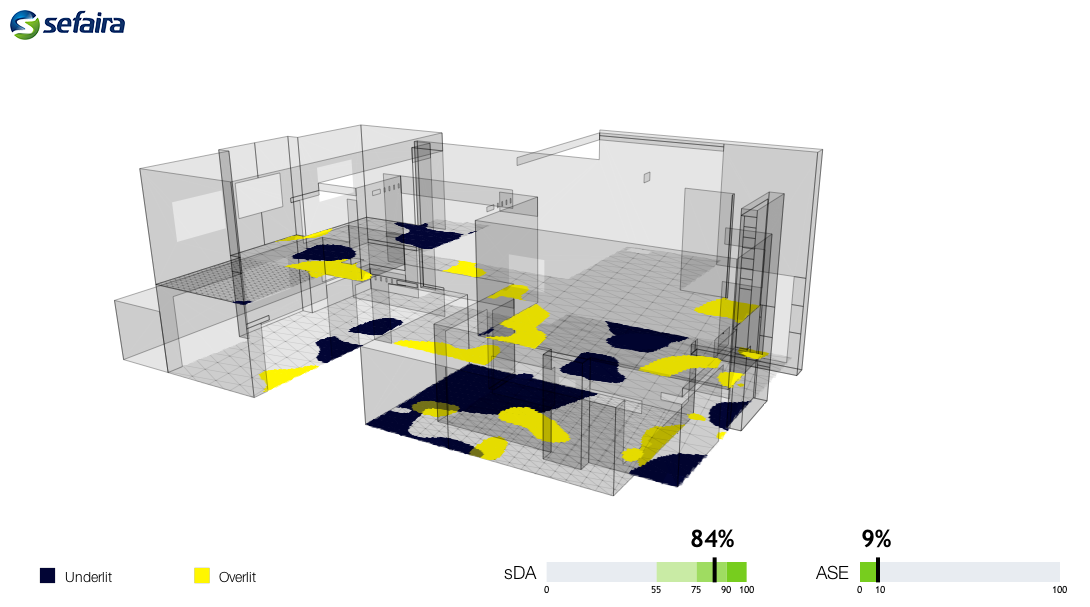
Sefaira Daylight Analysis showing improved daylight distribution
2030Studio used Sefaira analysis results and additional renderings to illustrate the impact of shading features on the building’s overall aesthetics as well as how the proposed changes actually improved daylighting throughout the home’s interior.
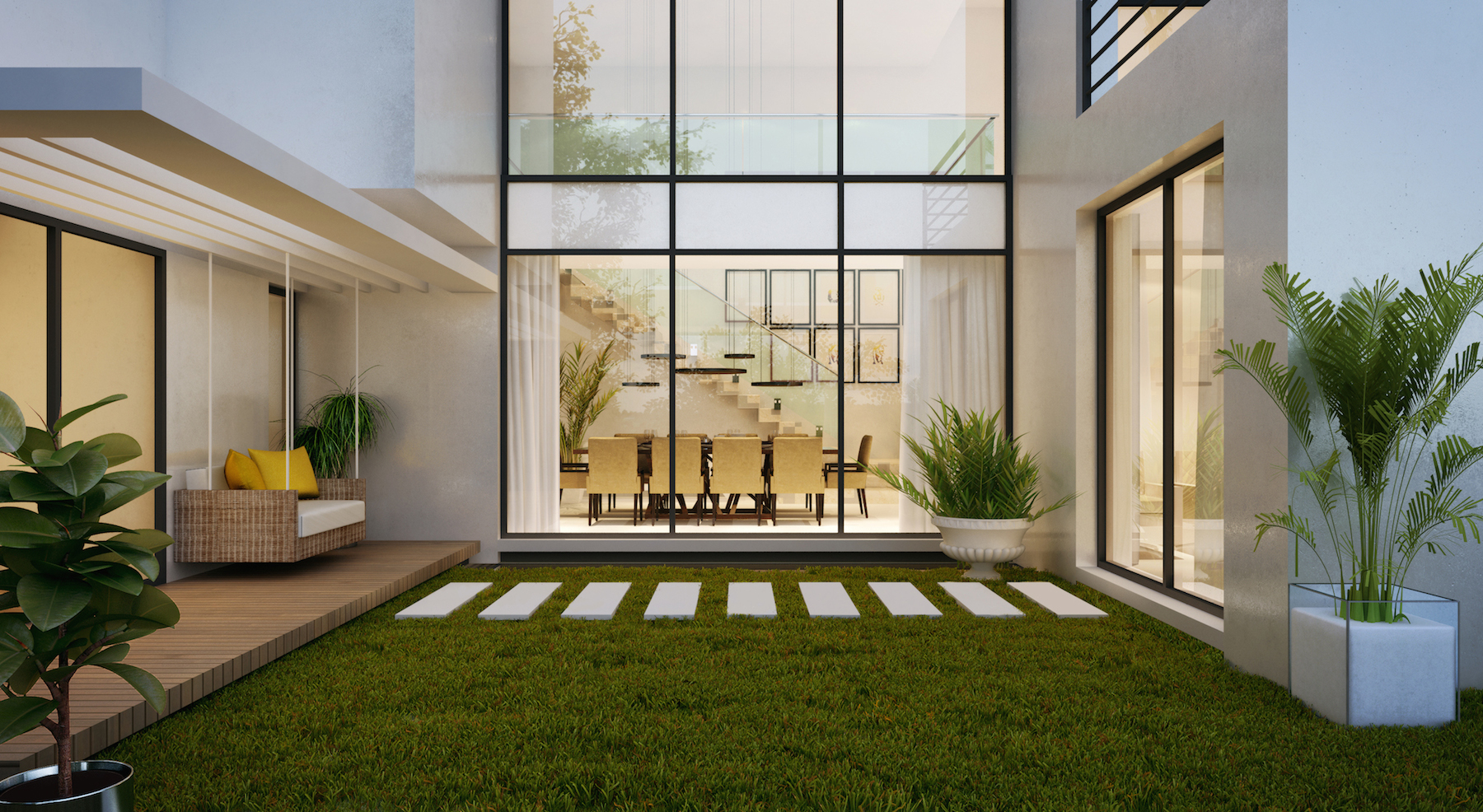
~~~~~~~~~~~~~~~~~~~~~~~
Published By
Rajib Dey
~~~~~~~~~~~~~~~~~~~~~~~
No comments:
Post a Comment